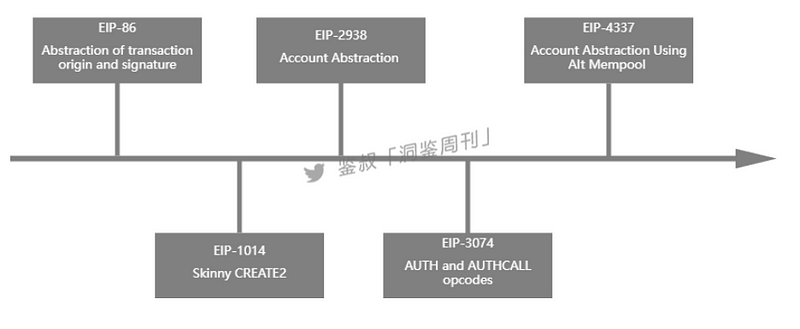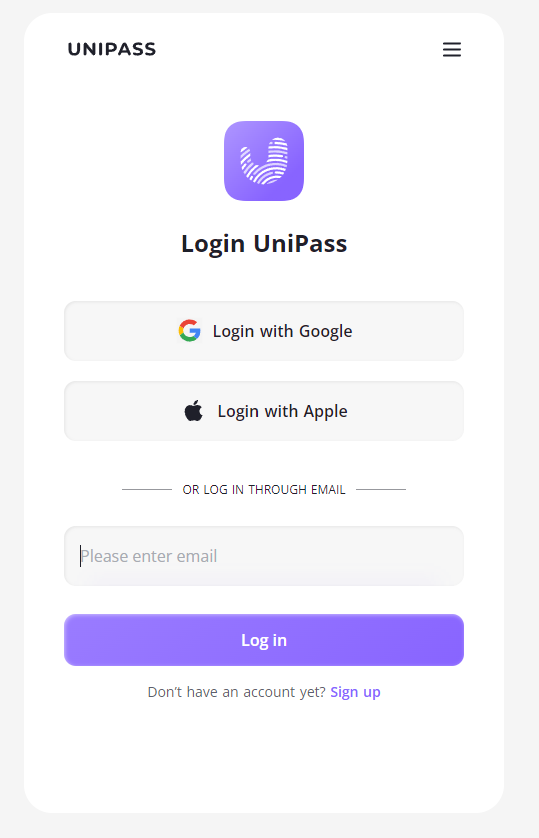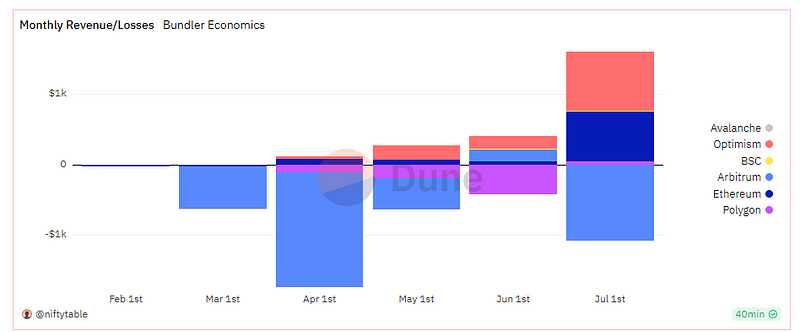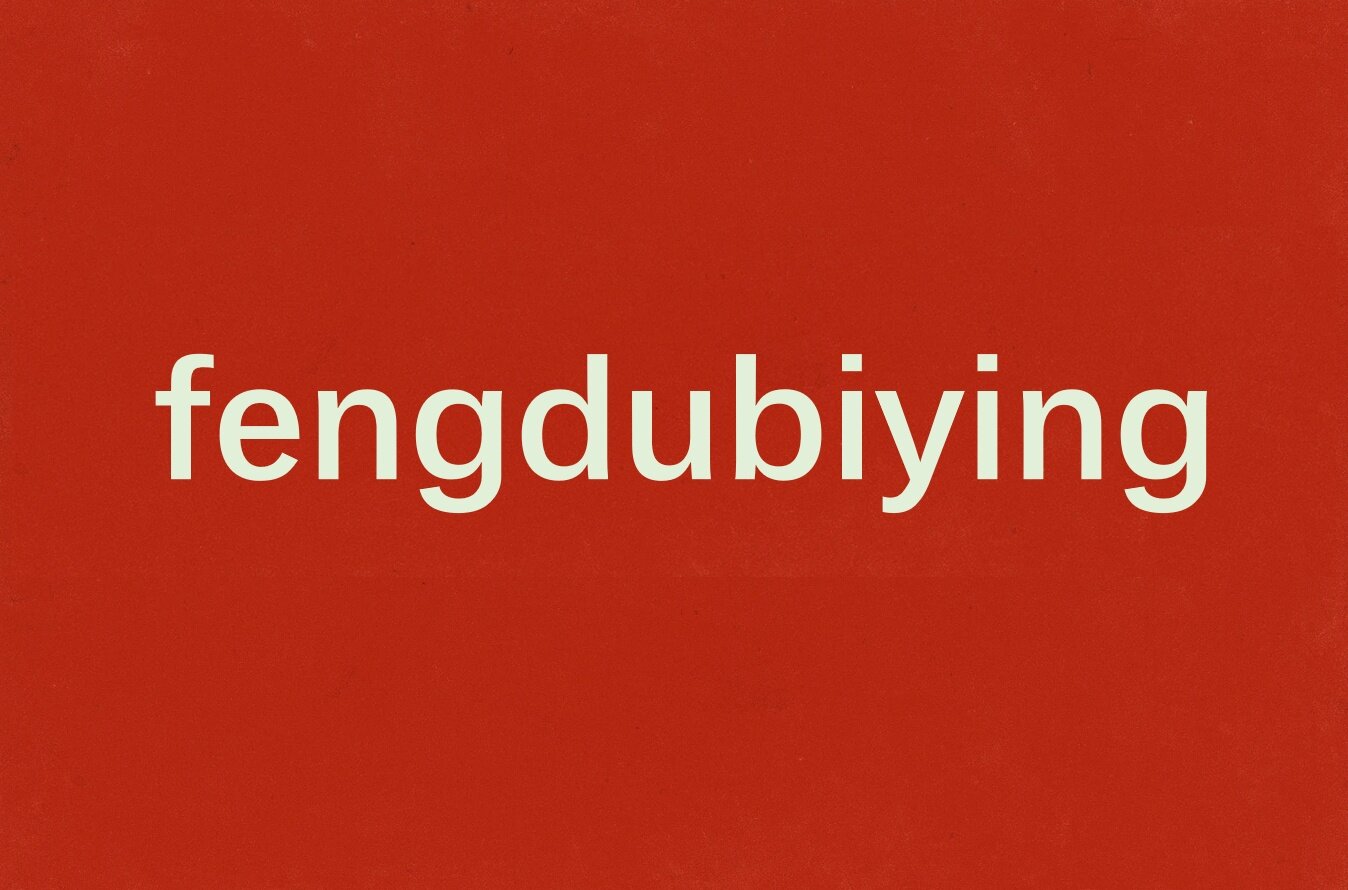Account Abstraction: Simplifying Your Crypto World
On July 17th, at the Ethereum Community Conference (EthCC) held in Paris, Ethereum co-founder Vitalik gave a keynote speech titled "The History and Future of Account Abstraction" and expressed support for account abstraction wallets. In fact, this is not the first time he has advocated for account abstraction, as he previously stated in a blog post that "account abstraction has always been a dream of the Ethereum developer community."
So, what problem is account abstraction trying to solve? And what exactly does account abstraction abstract? This article will explore these questions in detail.
1. Starting with the Ethereum Account Model
Before delving into account abstraction, we must first start with the basic Ethereum account model and understand the issues that wallets currently face.
Wallet accounts on Ethereum mainly fall into two types: externally owned accounts (EOAs) and contract accounts (CAs). Here's a comparison between the two:

Traditional EOA wallets that are controlled directly by a user's private key, such as Metamask, imToken, and OneKey, belong to the EOA wallet category.
Drawbacks of Traditional EOA Wallets
High entry barrier
Cryptocurrency wallets are important gateways for users to enter the Web3 world. However, wallets are not user-friendly to new users. Many people need to learn concepts such as private keys, public keys, addresses, and mnemonic phrases, and they may only start using wallets after gaining a certain level of understanding. This poses a high entry barrier for Web2 users who are accustomed to a single account-password system.
Single security safeguard, high risk of asset loss
A user's public key is randomly generated based on their private key, so there is a binding relationship between an EOA's private key and its public key. The private key is the only way for a user to access their EOA. Whoever possesses the private key controls the assets. If the private key is lost, it means that all the current assets within the associated EOA cannot be recovered. Similarly, if the private key is stolen for any reason, the user has no restrictions apart from quickly transferring the wallet assets; otherwise, the assets will be lost.
Customized functionality cannot be achieved
EOA's programmability is weak, unable to achieve batch transactions, automatic fund extraction, or other user customization functions. For example, if a user deposits ETH into Lido and wants to exchange the obtained stETH for USDT, using a traditional EOA wallet would be a cumbersome process, greatly affecting the user experience. If a wallet with customizable functions is used, the user only needs to make one transaction.
Expensive and inflexible Gas fees
Every transaction on the Ethereum network costs Gas, making the transaction fees for small amounts very expensive, especially during network congestion. At the same time, users must always hold ETH in their wallets to pay for transaction fees, and cannot use other currencies to pay for fees. Such expensive and rigid gas often causes trouble for many ordinary users.
The account abstraction technology that the Ethereum community developers have been exploring is to solve the disadvantages of using traditional EOA wallets.
II. What does account abstraction abstract?
When you first hear the concept of account abstraction, you might wonder what exactly is being abstracted. In the English context, "Abstraction" also means extraction. "Extraction" means taking out the essence of one or two things separately, while abandoning other burdens.
From this perspective, "Account Abstraction" is the extraction and integration of the functionality of EOA accounts to initiate transactions and CA accounts into a new programmable and versatile account. With this, we can discard the cumbersome private keys/mnemonic phrases and log in to the account with simple identity verification methods such as email. At the same time, we can also achieve more customized account functions, more flexible payment of Gas, and even sponsorship by DApps.

From Manual Transmission Cars to Automatic Transmission Cars
If we explain the difference in user experience between using a traditional EOA wallet and using an AA (Account Abstraction) wallet, it's like transitioning from driving a manual transmission car to driving an automatic transmission car. When we learn to drive a manual transmission car, we need to understand the matching of different gears and speeds, the coordination of throttle and clutch operations, and the technique of shifting gears, otherwise there is a risk of engine damage and stalling when we actually hit the road. However, driving an automatic transmission car is much simpler. Users only need to understand basic operations such as accelerating to move forward, braking to slow down, and putting it in neutral to park, and they also have the added benefit of smart features that manual transmission cars don't have. In essence, this is the abstraction of complex operations in manual transmission cars by automatic transmission cars.
Account abstraction is similar. For users, it simplifies the operation of the wallet and improves the user experience. Users don't need to care about the underlying logic, they can just use it directly.
ERC-4337 Operation Principle
Since Vitalik proposed the first account abstraction proposal EIP-86 in February 2017, the Ethereum community has iterated on many specific ideas for account abstraction operations. However, these proposals are not comprehensive enough or require changes at the consensus layer, which is not ideal for Ethereum. It wasn't until EIP-4337 was proposed in September 2021 that it became possible to achieve account abstraction without changing the Ethereum consensus protocol.

The EIP-4337 proposal was officially authorized as the ERC-4337 standard in March of this year, allowing developers to build AA (Account Abstraction) wallets using this standard.
So, how do we understand the operation principle of ERC-4337? When a user initiates a transaction using a traditional EOA account, it can be metaphorically understood as sending the "transaction" to the Mempool (Memory Pool) and waiting for the block validators to confirm it onto the chain.
In the ERC-4337 standard framework, instead of initiating a transaction, users initiate a "UserOperation". We can think of it as a package, because compared to a "transaction", a "UserOperation" contains more information such as sender address, identity signature, payer address, and complex user instructions. Therefore, it is more like a package. Users first place this package in a dedicated transfer station (UserOperation Mempool), and then the courier (Bundler) at the transfer station organizes and packs the packages before sending them to the memory pool (Mempool).
Therefore, we can completely analogy the operation of ERC-4337 as a process of delivering packages for users.

Faced with so many packages, the courier (Bundler) responsible for the transfer station can choose a method similar to that of the block validator (Validator). They prioritize packaging the packages with higher transaction fees. After bundling a batch of packages (bundle transactions), the courier does not directly place the bundle into the memory pool for two reasons: first, the instructions written by the users in the package have not been executed yet; second, the hardworking courier hasn't received the payment yet.
Because the transaction fee paid by the user is not directly given to the courier, but still remains in the user's smart contract wallet. In order for the courier to receive this payment, they have to call the EntryPoint smart contract, which we can think of as an entry execution machine. Only when the user's package enters this machine, the machine will automatically transfer the money from the user's smart contract wallet to the courier.
Now, what does this entry execution machine do to the package internally? Firstly, the machine will unpack the package internally and verify whether the user's identity and the estimated amount of money stored by the user are sufficient to compensate the courier's fees. If the verification passes, it will pay the user's transaction fee to the courier and distribute the user's instructions for execution (regardless of the success or failure of the execution, a tip will be paid). If there is any excess fee, it will be refunded to the wallet. If the verification fails, the package will be directly discarded.
When the machine pays the courier, there is another situation. If the user includes the payee's address information in the package, the execution machine will check if the corresponding payee (paymaster) has enough money stored in a dedicated place. If there is enough money, the user does not need to pay this fee. Because of the existence of this feature, in real-world applications, DApps can sponsor Gas to obtain user satisfaction, or users can use other ERC-20 tokens to pay the payee for flexible Gas fee.
However, it is worth noting that it is necessary to pay for and irreversible the activation of the entrance executive machine by the courier, regardless of the number of valid packages in the end, the courier will not be refunded the estimated cost of the entrance executive machine. Therefore, in order to avoid losses, smart couriers will simulate the entire process using a device similar to the entrance executive machine before allowing the packages to enter the actual machine, estimating whether the final fee they receive is sufficient, and if it is sufficient, they will let the packages enter the real machine.
In this way, the account abstraction is successfully implemented under the ERC-4337 standard framework, not only without changing the underlying protocol of Ethereum, but also enabling accounts to achieve complex functions such as batch transactions, social recovery wallets, and gas fee subsidies.
III. AA Wallet based on ERC-4337 Standard
Different Wallet Solutions
Before the adoption of ERC-4337, there were other solutions on the market for the drawbacks of traditional EOA wallets: smart contract (CA) wallets and multi-party computation (MPC) wallets. Below, we will briefly introduce these two types of wallets and compare the advantages of account abstraction (AA) wallets.
Smart Contract (CA) Wallets
Essentially, it is a contract. Multi-signature wallets are the most common type of smart contract wallets, where users put money into the smart contract and it is controlled by multiple EOA accounts, and all transactions are executed through the contract. Because the contract has logic, it can more securely control assets. Such wallets have not much usage scenario for individuals, but they are very effective for companies and organizations. Examples include GnosisSafe and other wallets. Of course, there is also a type of smart contract wallet that has not used the ERC-4337 standard but has implemented similar account abstraction functionality through other technological means, such as Argent and other wallets.
Multi-Party Computation (MPC) Wallets
Multi-Party Computation (MPC) wallets refer to the distribution of the single private key controlling EOA into smaller fragments and kept by multiple parties. When conducting transactions, the fragments are combined together. Because the private keys are distributed across different servers, they are more secure. Examples include Fireblocks, ZenGo, and other wallets.
Comparison of Different Wallets
In order to visually demonstrate the differences and advantages of different wallet solutions, we divide wallets into MPC Wallets, Multisig Wallets, ERC-4337-based AA Wallets, and non-ERC-4337-based AA Wallets.

From the above comparison, it can be seen that ERC-4337-based AA Wallets are superior to other types of wallets in terms of usability, security, and functionality.
Inventory of ERC-4337-based AA Wallets
UniPass
In May of this year, UniPass announced a merger with hardware wallet Keystone, forming Account Labs. They will focus on account abstraction and develop Web3 account abstraction solutions together. The CEO of Account Labs is Liu Lixin, the founder of Keystone, and the COO is Zhi Xian, the founder of UniPass.
UniPass has implemented features that allow users to log in and recover wallets using social methods, and allows flexible payment of gas, etc. It is currently compatible with ERC-4337 and will further upgrade UniPass in the second half of this year to accelerate the implementation and application of account abstraction capabilities.

Echooo Wallet
Echooo Wallet is an AA wallet based on the ERC-4337 standard, combined with MPC and AI technologies, supporting multiple signatures and social recovery functions. Echooo Wallet was founded in 2022 and completed financing of $15 million with a valuation of $100 million on July 17. A&T Capital and others participated in the investment. On the same night, the "Limited Time Get AA Wallet" activity was launched, attracting attention.

OKX Web3 Wallet
On August 2, OKX Web3 Wallet officially launched an AA smart contract wallet based on the ERC-4337 standard. It is the first AA smart contract wallet that supports Ethereum, Polygon, Arbitrum, Optimism, BNB Chain, Avalanche, and OKT Chain. On the second day of its launch, OKX's AA smart contract wallet was recognized by the ERC-4377 official, stating that its user experience design is very refined (the original tweet has been deleted).
 Currently, OKX's AA smart contract account can be easily created in the new version of OKX app, and it has implemented various functions such as flexible payment of gas fees, one-click DEX exchange, one-click DeFi mining, and one-click batch listing of NFTs. In order to incentivize users, a limited-time gas-free activity has been launched, with a maximum reward of 5U.
Currently, OKX's AA smart contract account can be easily created in the new version of OKX app, and it has implemented various functions such as flexible payment of gas fees, one-click DEX exchange, one-click DeFi mining, and one-click batch listing of NFTs. In order to incentivize users, a limited-time gas-free activity has been launched, with a maximum reward of 5U.
Four, Reflection and Summary
In Vitalik's vision, he hopes to make managing a cryptocurrency wallet as simple as managing an email inbox through account abstraction. The vision of account abstraction is indeed very attractive, and some supporters even believe that successful AA wallets will attract a large number of Web2 users to the cryptocurrency industry and promote the emergence of new ecosystems.
However, the more something is hyped in the cryptocurrency community, the more we need to analyze it calmly. According to data from Dune, despite the relatively sound operation mechanism of ERC-4337, some on-chain Bundlers have still experienced significant losses this year. As shown in the graph, apart from the considerable income from Bundlers on Optimism and Ethereum in July this year, there is no obvious gain from Bundlers on other chains.
In the value logic of blockchain, all behaviors are regulated by objective incentive and punishment mechanisms. If the high losses of Bundlers cannot be effectively resolved, it will obviously weaken the positive behavior of Bundlers, which is detrimental to the overall operation of the system.

Another question worth considering is whether AA wallets can necessarily attract more users. In the "2023 Cryptocurrency Wallet Report" published by imToken, a random survey of 180 cryptocurrency users found that 63% of users prefer to use exchange custodial wallets because they are cheaper, more convenient, and have a lower risk of funds being stolen by hackers.
AA wallets may be able to attract users of exchange custodial wallets, but relying solely on them may not necessarily attract more Web2 users to join the cryptocurrency industry. Because looking at previous successful DeFi, NFT projects, or applications like StepN that have broken into the mainstream, what can attract Web2 users is either a specific use case that solves certain pain points or strong wealth effects. Improving the user experience of wallets is indeed a bonus, but whether it can play a role of giving a helping hand in the current bear market is still up for debate.
Therefore, in order for account abstraction to truly achieve the desired effect, it requires not only the efforts of AA wallets but also the efforts of the entire AA ecosystem, from the application layer to the infrastructure.
Let's wait and see.
Disclaimer: The content on this site may involve project risks and is for informational and reference purposes only, not constituting any investment advice. Please consider it rationally, establish the correct investment concept, and improve risk awareness. It is recommended to comprehensively consider various factors, including but not limited to personal purchasing purposes and risk tolerance, before interacting with or holding. Copyright notice: The copyright of the quoted information belongs to the original media and author. Without the consent of J Club, other media, websites, or individuals are not allowed to reprint articles from this site, and J Club reserves the right to pursue legal responsibility for the above actions.



